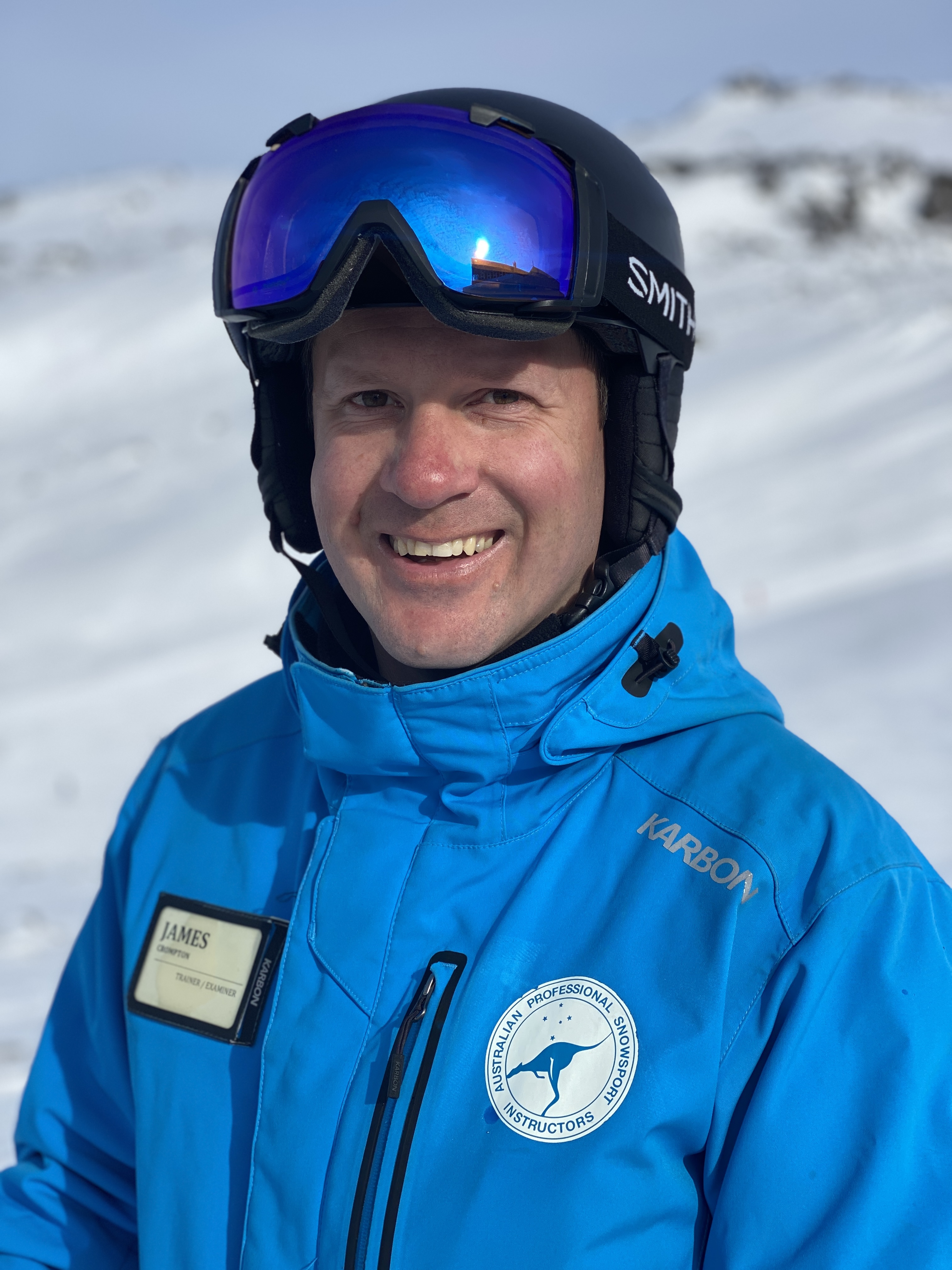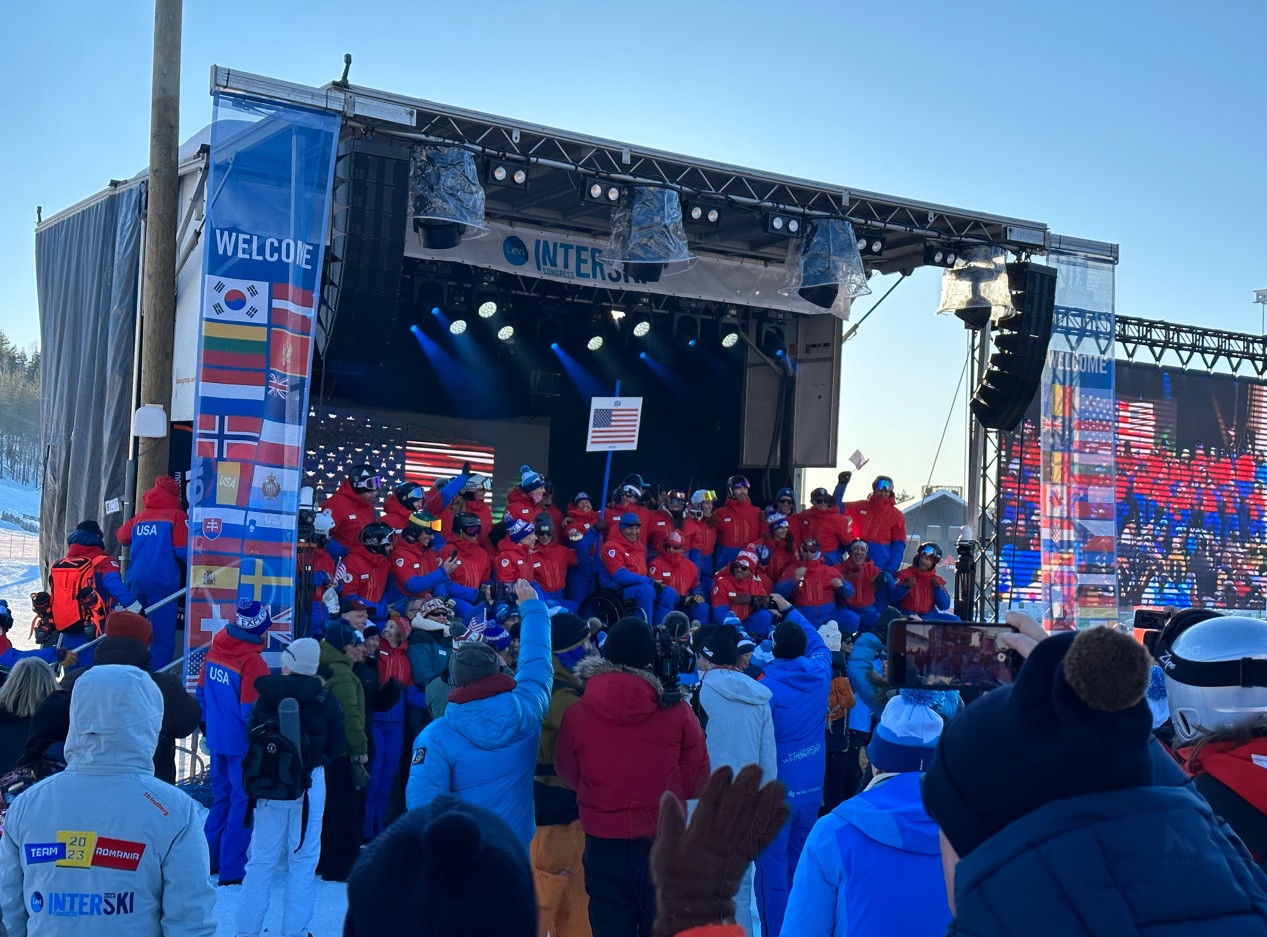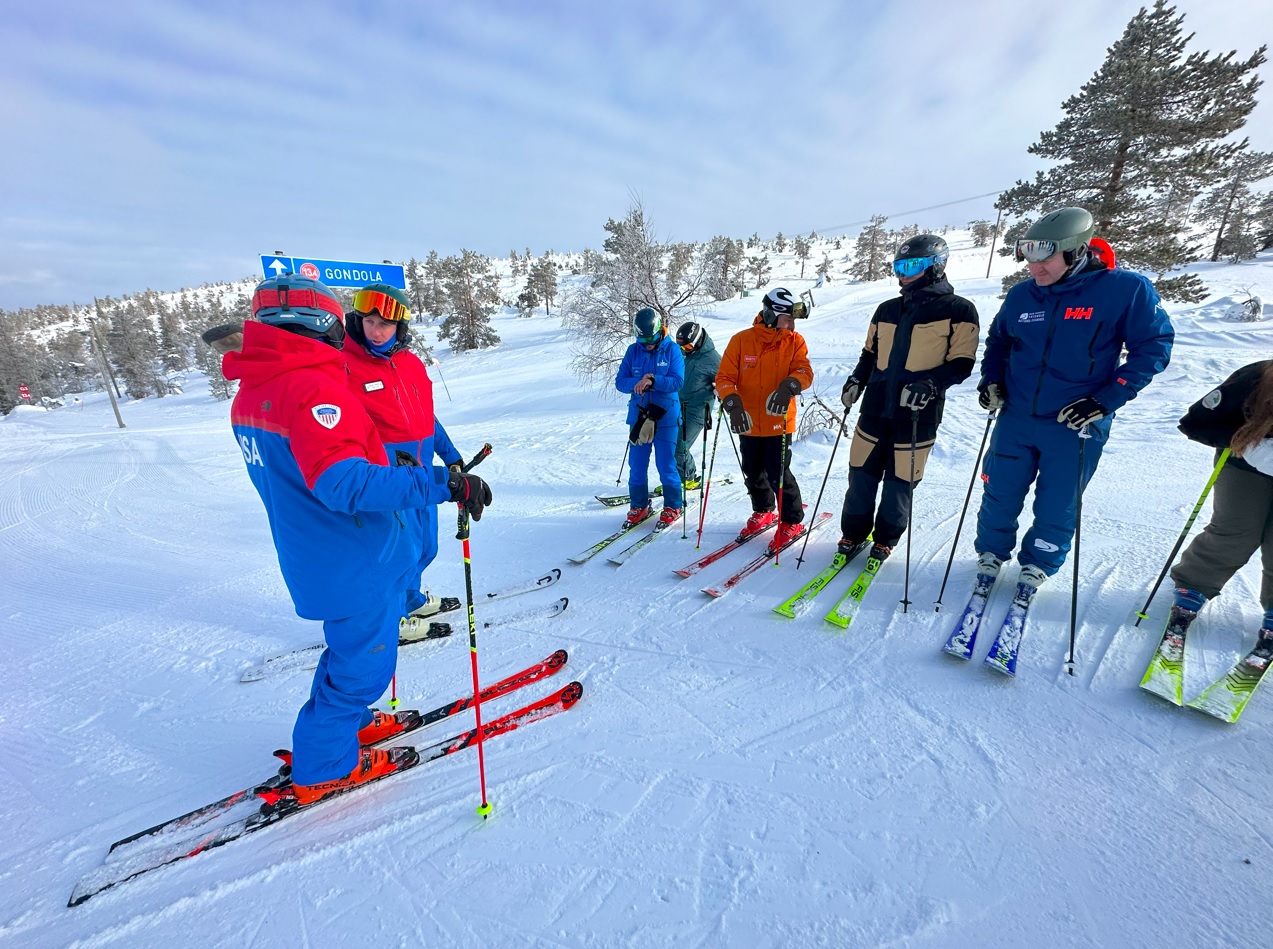 |
USA Training & Assessing People Skills |
By James Crompton
Whilst I think most of us would agree that the difference between a good instructor and a great instructor often comes down to their people skills, most national snowsports training and grading bodies focus their training, and particularly their assessment, on technical and teaching skills.
At the last Interski Congress, Pamporovo 2019, PSIA presented their Learning Connection Model which encompasses the facets of Technical Skills, Teaching Skills and People Skills. At Levi 2023 the focus shifted to how this model is evolving, providing more granular detail and explaining its impact on the guest experience.
I attended both the on-snow workshop and indoor lecture on how PSIA are training and assessing People Skills. These sessions were at the top of my list when selecting the workshops and presentations I wanted to attend.


Training
I joined PSIA National Team Members Josh Fogg, Ann Schorling, Kevin Jordan and Mike Hafer for their on-snow workshop, where they very clearly separated People Skills from those two other skill sets and candidly delivered how they train these skills using the SBI model (Situation, Behaviour, Impact) adopted from the Center for Creative Leadership.
The SBI Mode
Americans love some theatre and the PSIA didn’t disappoint! With some exceptional role-play, Mike delivered two mini-lessons to half of the group, whilst the other half observed. After each session we reviewed Mike’s delivery, discussing the Situation (where and when) the Behaviours observed (what happened) and the Impact those behaviours had on individuals (effect).
Situation
In the initial session Mike delivered a lesson focused on developing the group’s synchro skiing. His task was to dominate the conversation and only give feedback to one person.
Behaviour
Some of the behaviours noted by the students in the group and the observers included:
- Not learning/knowing the students’ names
- Calling students by the wrong name or just by numbers or their nation
- Looking at the ground and avoiding eye-contact, having his back to people
- Tapping poles on students’ skis or pointing at them to get attention
- Talking very fast
- A serious look on his face
- Setting unrealistic goals
- Withdrawn/disinterested body language
- Delivering in a command style where the instructor made all the decisions about the learning process
- Very little student interaction or two-way conversations
Impact
Ann and Kevin, facilitated the workshop and asked individuals in the group how those behaviours made them feel, stressing that this part of the process was personal and that as trainers we should not assume impact, but find out the impact from the students, or from the instructor. Impacts expressed included:
- Feeling unvalued
- Feeling disengaged
- Feeling like the instructor didn’t care about the individual
- Feeling like they wanted to leave the lesson
There was a distinct focus on separating the behaviours from the impact. The behaviours were noted with no judgement - just the observed facts of what actually happened.
In Mike’s second session he role-played a delivery that you might class as being at the opposite end of the spectrum.
Situation
The Situation remained similar but Mike’s task was to be collaborative, give feedback to the entire group and elicit the content for the session from the students.
Behaviour
Observed behaviours included:
- Learning and using students’ names
- Smiling and making strong eye contact
- Talking slowly
- Plenty of interaction with the students
- Asking the students lots of questions
- Animated body language with gestures, smiles and enthusiasm
- Transferring a great deal of responsibility and decision making to the students/learners and adopting more of a Learner-Design teaching style
Impact
- Group members described how Mike’s behaviour led them to feel:
- Valued
- Engaged and involved
- Social
- Like the instructor cared
- Frustrated that we didn’t get moving sooner and that we didn’t ski more
Assessment
Whilst Mike’s behaviours in the second lesson had a majority positive impact on members of the group, the final impact listed above shows how we can go too far with certain behaviours for some people. It stresses the importance of separating behaviours (objective) from impacts (subjective) and not assuming impacts, as they vary based on our different perspectives.
Inevitably, this can make People Skills trickier to assess as there is no ‘right’ answer. The most appropriate answer is about adapting and best combining behaviours for the given situation and the guest(s) in front of us. Assessments need this context and authentic interactions. People Skills have been added to PSIA’s Teaching Assessments in order to create a more realistic assessment. They are assessed in adequate time and alongside no other assessment criteria, which might otherwise interfere.
It's early days in this sphere, and whilst PSIA appear further ahead with training people skills than they are with assessing them, they certainly appear to be leading the industry in this space. An exceptional workshop and an informative presentation from a slick and organised PSIA team that left me inspired to use the SBI model in Australia this winter!
APSI Resources
- Video: Indoor Lecture Video (JC) - Google Drive, please host and link with QR Code
- Video: Outdoor Workshop Video (JC) - Google Drive, please host and link with QR Code
External Resource
- Podcast: Josh Fogg on People Skills from Interski, Levi 2023
- PDF: PSIA/AASI Interski 2023 Presentation Supplement
- PDF: PSIA/AASI People Skills Performance Guide